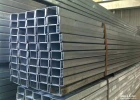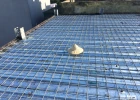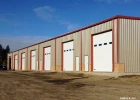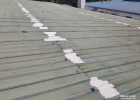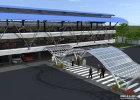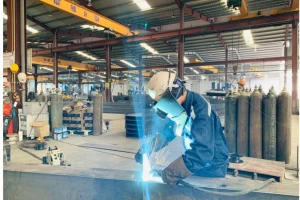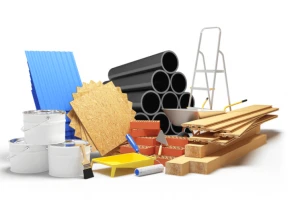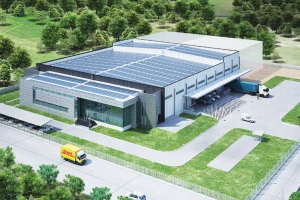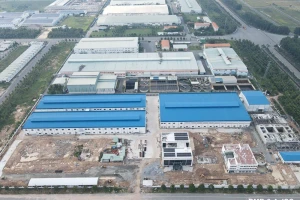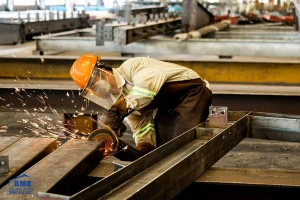What is a louver? Structure, pros and optimal selection
Louvers are an effective ventilation solution for buildings, enhancing aesthetics and saving energy. With the ability to adjust light, circulate air, prevent rain and dust, louvers are increasingly chosen by homeowners and businesses. So, let’s join BMB Steel to explore what a louver is, its structure, outstanding features, types, and a guide on selecting the most suitable louver in the article below.
1. What is a louver?
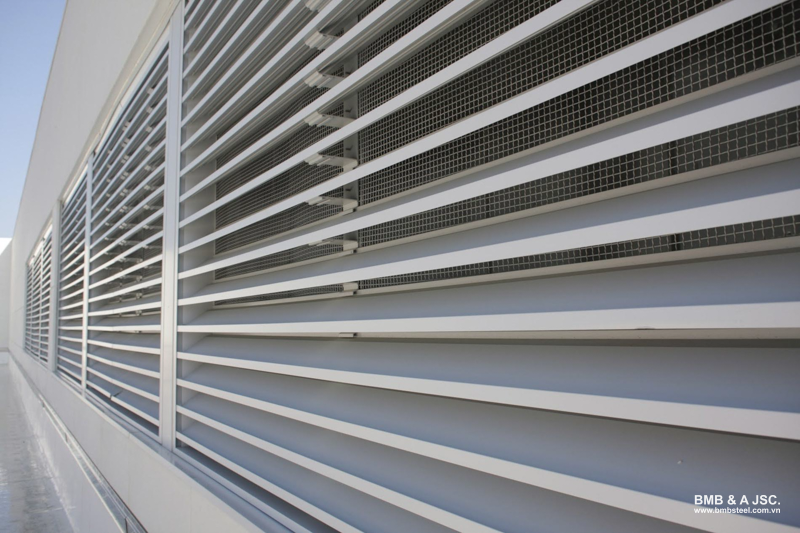
A louver is a structure consisting of multiple slats arranged at an angle within a frame, allowing control of natural light, airflow, and visibility. The horizontal blades are set at specific angles to block rain and dust while still ensuring ventilation for the space. Louvers can be designed as either fixed or adjustable.
They can be made from various materials such as metal, plastic, wood, or glass. Thanks to their flexible design, louvers can easily blend with the overall architecture of a building and meet specific requirements for ventilation and lighting.
Louvers are widely used in industrial factories, serving as an advanced ventilation system. The most common installation locations are at air inlets.
Read more: Drawings of pre-engineered steel buildings trending in 2021
2. Structure of industrial factory louvers
The structure of industrial factory louvers is quite simple, typically consisting of 2 main components:
- Steel frame: Made from durable materials such as alloy steel, galvanized steel sheet, aluminum, etc. The frame has high rigidity, helping shape and secure the louver blades in place.
- Louver blades: These are metal slats arranged at an angle to direct airflow, allow natural light in, and reduce the impact of rain and dust.
3. Outstanding advantages of louvers
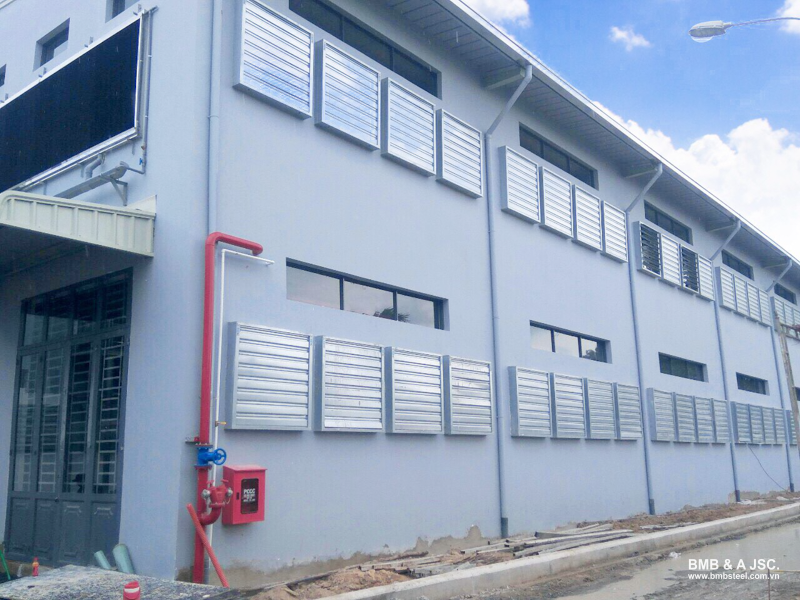
Cooling the air
The ability of louvers to regulate airflow significantly reduces the indoor temperature. The temperature is continuously balanced between the inside and outside environments.
Filtering the air and removing dust
The blades can be adjusted in angle, helping filter dust and impurities before allowing fresh air in. Combined with other components of the ventilation system, louvers help clean the air at a basic level right from the start.
Controlling natural light sources
Thanks to their flexible structure, louvers can be adjusted to block excess light or increase natural light. This allows buildings to control brightness proactively, ensuring it meets the requirements for areas that need more or less light.
Read more: Common types of steel structures
Providing a natural oxygen source
In all types of buildings, louvers act as “artificial lungs,” continuously circulating fresh, oxygen-rich air indoors, maintaining a healthy environment for users.
Easy installation
Louvers are designed based on practical needs, so installation is simple and doesn’t require overly complex techniques.
Cost-saving
Thanks to an optimized design for intended use, louvers prevent material wastage. Furthermore, the materials used are often reasonably priced, helping minimize production costs.
Enhancing the building’s aesthetics
In addition to their functionality, louvers add an architectural highlight, making the building more complete in both appearance and operational efficiency.
4. Common types of louvers
4.1. Classification by material
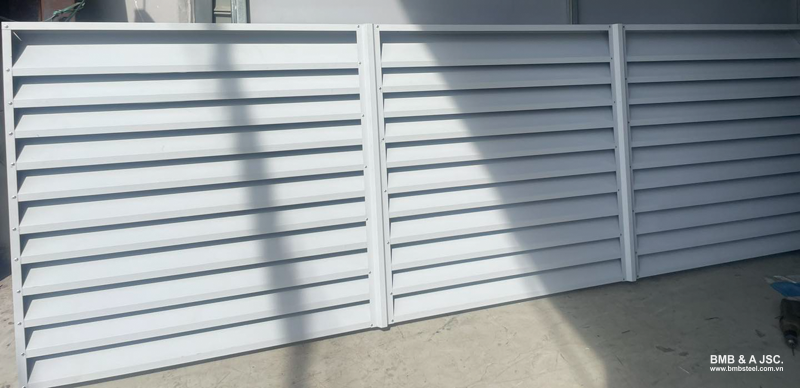
- Aluminum louvers: Aluminum louvers are lightweight, highly durable, rust-resistant, and are often powder-coated to extend their lifespan. They come in a wide range of colors, making it easy to blend with various architectural styles. This is a popular choice for homes, offices, and commercial buildings, ensuring ventilation while enhancing aesthetic value.
- Steel louvers: Made from steel with excellent load-bearing capacity, high durability, and resistance to harsh weather conditions. Steel louvers are commonly used in factories, industrial zones, or projects requiring high load capacity.
- Wooden louvers: Offering a warm, nature-friendly feel, wooden louvers are suitable for classical constructions, villas, or rustic-style houses. However, wood is susceptible to termites and requires regular maintenance to maintain its quality.
- Plastic louvers: Affordable, lightweight, easy to install, water-resistant. However, plastic louvers are less durable than metal ones and are typically used in temporary structures or projects with limited budgets.
4.2. Classification by functionality
- Fixed louvers: The most common type, which can be permanently mounted in place or installed on rails. They are often integrated into building structures such as sunshades, window covers, or door screens. These louvers have no moving parts, are made from metal or plastic, and are designed to control airflow.
- Adjustable louvers: This type features a mechanism that allows changing the blade angles to regulate the amount and direction of airflow as needed. The blades are mounted on hinges and can be opened or closed manually, making it easy to control temperature and air circulation within the space.
5. Guidelines for choosing the right louvers for factories
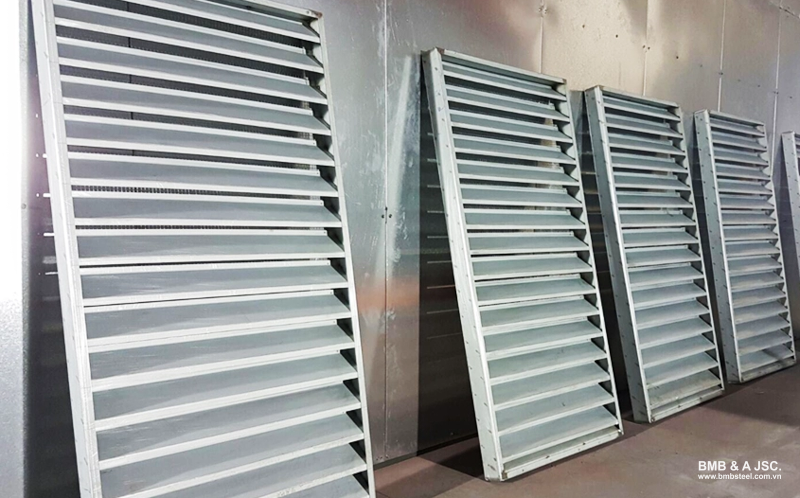
Based on usage purpose
- Food or pharmaceutical factories: Prioritize aluminum louvers for their corrosion resistance, easy cleaning.
- Mechanical or manufacturing workshops: Steel louvers are the optimal choice thanks to their durability and high load capacity.
- Temporary or low-budget projects: Plastic louvers meet the needs with low cost and simple installation.
Based on environmental conditions
- Humid environments with many chemicals: Aluminum or plastic louvers are ideal for their excellent corrosion resistance.
- Dry areas with minimal weather impact: Steel louvers can be used to save costs.
Based on budget
- High budget: Aluminum louvers provide long lifespan, effective ventilation, and high aesthetics.
- Medium budget: Steel louvers are suitable for most industrial buildings.
- Low budget: Plastic louvers are a cost-effective solution for small projects.
Based on technical requirements
If the project requires insulation or noise reduction, consider aluminum or plastic louvers with an additional specialized insulation layer.
6. Method for calculating the number of louvers for factories
To determine the number of louvers required for a factory or industrial building, businesses and contractors can follow these steps:
Step 1: Calculate the required airflow for the factory space
Tg = V×X (m3/hour)
Where:
- V: Volume of the factory (m3)
- X: Number of air changes per hour (times/hour)
Step 2: Calculate the number of louvers to install
N = Tg/Q
Where:
- Tg: Required airflow (m3/hour)
- Q: Capacity of one louver (m3/hour)
Example:
A production workshop has dimensions: width 15 m, length 100 m, height 10 m. The required air change rate is 50 times/hour. The capacity of one louver is 50,000 m3/hour.
Calculation:
Factory volume: V = 15×100×10 = 15,000 (m3)
Required airflow: Tg = 15,000×50 = 750,000 (m3/hour)
Number of louvers needed: N = 750,000/50,000 = 15 (louvers)
7. Process of manufacturing louvers
- Verify size specifications and select materials.
- Develop a design plan specifying the thickness of the blades and steel frame.
- Prepare materials.
- Assemble at the production and processing factory.
- Apply a powder coating finish according to usage requirements.
- Transport and install at the construction site.
Louvers are an important component in pre-engineered steel buildings, helping to maintain a cool and fresh working environment while reducing operating costs and extending the building's lifespan. Choosing the right type of louvers that match environmental conditions, budget, and technical requirements will deliver long-term benefits. With a team of highly experienced professionals, BMB Steel is ready to provide consultation and optimal louver solutions, ensuring quality, aesthetics, and on-time delivery for all your industrial projects.









